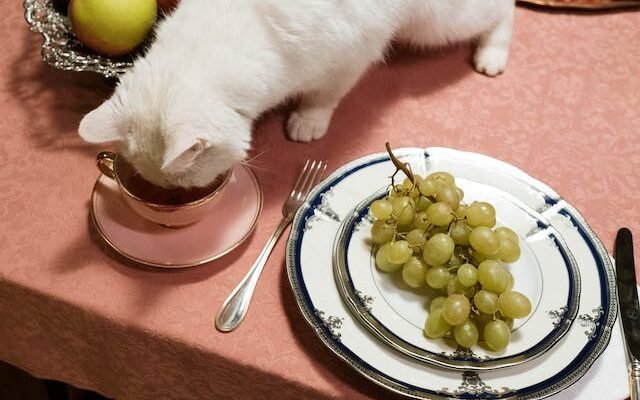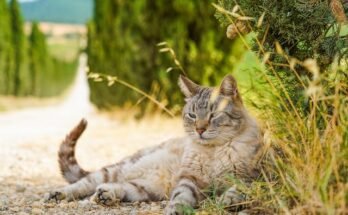Why choose homemade cat food?
We want the best for cats as cat owners. One way to ensure their well-being is by opting for homemade cat food. While commercial cat food may seem convenient, there are numerous advantages to preparing meals for your feline friend at home.
Firstly, homemade cat food allows you to have full control over the ingredients you use. Many commercial cat foods contain fillers and additives that may not be beneficial for your cat’s health. By making their food from scratch, you can ensure that they receive a balanced and nutritious diet.
Secondly, homemade cat food can be tailored to meet the specific dietary needs of your cat. Some cats have allergies or sensitivities to certain foods, and commercial cat food may not cater to these individual requirements. With homemade cat food, you can choose ingredients that are suitable for your cat’s unique needs, ensuring they receive the necessary nutrients without any adverse reactions.
Lastly, preparing homemade cat food can be a fun and fulfilling experience. It allows you to bond with your cat and engage in their well-being on a deeper level. It can also be a creative endeavor, as you explore different recipes and flavors to keep your cat’s meals interesting and enjoyable.
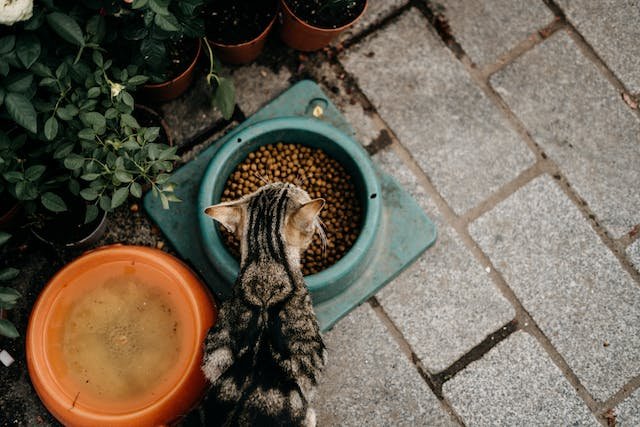
The benefits of homemade cat food
There are numerous benefits to feeding your cat homemade food. Firstly, it promotes overall health and well-being. Commercial cat food often contains low-quality ingredients that may not provide the necessary nutrients for your cat’s optimal health. By preparing homemade cat food, you have the opportunity to include high-quality protein sources, essential vitamins, and minerals that are crucial for your cat’s growth and development.
Moreover, homemade cat food can help prevent certain health issues. Cats are prone to urinary tract problems and obesity, among other conditions. By controlling the ingredients and portion sizes in your cat’s meals, you can reduce the risk of these health concerns. For instance, incorporating lean proteins and avoiding excessive carbohydrates can help maintain a healthy weight and support urinary tract health.
Additionally, homemade cat food allows you to avoid potentially harmful additives and preservatives. Some commercial cat foods contain artificial flavors, colors, and preservatives that can have negative effects on your cat’s health. By preparing their food at home, you can ensure that it is free from these unnecessary additives, promoting a natural and wholesome diet for your feline companion.
Risks of commercial cat food
While commercial cat food may seem convenient, it is important to be aware of the potential risks associated with it. Many commercial cat foods contain fillers and by-products that offer little nutritional value. These fillers can lead to weight gain and digestive issues in cats. Moreover, some commercial cat foods may contain artificial additives and preservatives that can have adverse effects on your cat’s health.
Another concern with commercial cat food is the lack of transparency regarding the sourcing and quality of ingredients. It can be challenging to determine the origin and quality of the meat and other components used in commercial cat food. This lack of information can be concerning, especially when considering the impact it may have on your cat’s health.
Furthermore, some commercial cat foods may not provide the necessary variety of nutrients that cats require.
Cats are carnivores by nature, which means they need a diet that is primarily meat-based. However, some commercial cat foods may have a higher proportion of carbohydrates and fillers, which may not adequately meet their nutritional needs.
Understanding your cat’s nutritional needs
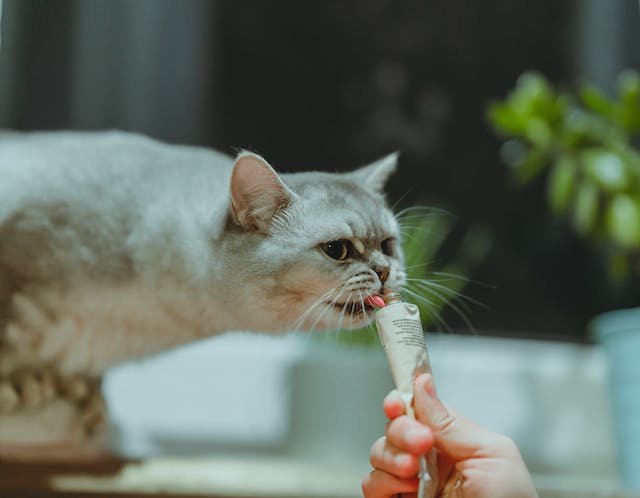
To provide a balanced and nutritious homemade diet for your cat, it is crucial to understand their nutritional needs. Cats require a diet rich in animal-based proteins, essential fatty acids, vitamins, and minerals. These nutrients are essential for their muscle development, immune system, and overall health.
Proteins should form the foundation of your cat’s diet. Choose high-quality meats such as poultry, fish, or turkey. These proteins provide the necessary amino acids that cats require for their growth and maintenance.
Essential fatty acids, such as omega-3 and omega-6, are vital for your cat’s skin and coat health, as well as their overall well-being. Incorporate sources of these fatty acids, such as fish oil or flaxseed oil, into your cat’s homemade food.
Vitamins and minerals are also essential components of a cat’s diet.
You can get these nutrients from a wide variety of fruits, vegetables, and grains, including carrots, spinach, and blueberries. However, it is important to note that some fruits and vegetables are toxic to cats, so research safe options before incorporating them into their meals.
Essential ingredients for homemade cat food
When preparing homemade cat food, it is essential to include the right ingredients to meet your cat’s nutritional needs. Some essential ingredients to consider are:
- High-quality protein sources: As mentioned earlier, cats require animal-based proteins for optimal health. Choose lean meats like chicken, turkey, or fish as the main protein component of your cat’s meals.
- Healthy fats: Essential fatty acids are crucial for your cat’s skin, coat, and overall well-being. Incorporate sources of omega-3 and omega-6 fatty acids into their diet, such as fish oil or flaxseed oil.
- Complex carbohydrates: While cats do not require a significant amount of carbohydrates, some complex carbohydrates can provide fiber and energy. Consider adding small amounts of cooked brown rice or sweet potatoes to their meals.
- Fruits and vegetables: Certain fruits and vegetables can provide additional vitamins and minerals to your cat’s diet. However, it is important to research safe options, as some fruits and vegetables can be toxic to cats.
- Supplements: To ensure that your cat receives all the necessary nutrients, consult with your veterinarian about appropriate supplements. They may recommend adding specific vitamins or minerals to your cat’s homemade food.
By including these essential ingredients, you can create a balanced and nutritious diet for your cat.
A step-by-step guide to making homemade cat food
Preparing homemade cat food may seem daunting at first, but with the right guidance, it can become a manageable and rewarding task. Follow this step-by-step guide to ensure that you provide your cat with a well-rounded homemade diet:
- Consult with your veterinarian. Before making any dietary changes for your cat, consult with your veterinarian. They can provide valuable insights into your cat’s specific nutritional needs and offer guidance on creating a balanced homemade diet.
- Research recipes: Look for reliable sources of homemade cat food recipes. Ensure that the recipes include the necessary nutrients and follow the guidelines provided by your veterinarian.
- Gather ingredients: Once you have chosen a recipe, gather all the necessary ingredients. Ensure that the ingredients are fresh and of high quality.
- Prepare and cook: Follow the recipe instructions to prepare and cook the homemade cat food. Pay attention to cooking times and temperatures to ensure that the food is safe for consumption.
- Portion and store: Once the homemade cat food is cooked, portion it into appropriate serving sizes for your cat. Store the portions in airtight containers and refrigerate or freeze them, depending on the recipe’s instructions.
- Monitor your cat’s response: Introduce the homemade cat food gradually into your cat’s diet, monitoring their response and any potential digestive issues. Slowly increase the proportion of homemade food while reducing the amount of commercial cat food, if applicable.
Recipe for homemade cat food
Here is a simple recipe to get you started on making homemade cat food:
Ingredients:
- 1 cup cooked chicken (shredded)
- 1/4 cup cooked peas (mashed)
- 1/4 cup cooked carrots (mashed)
- 1 tablespoon fish oil
Instructions:
- In a bowl, combine the shredded chicken, mashed peas, mashed carrots, and fish oil.
- Mix the ingredients until they are evenly distributed.
- Portion the mixture into appropriate serving sizes for your cat.
- Store the portions in airtight containers in the refrigerator or freezer, depending on the desired shelf life.
Remember to consult with your veterinarian to ensure that this recipe meets your cat’s specific nutritional needs.
Tips for transitioning your cat to homemade food
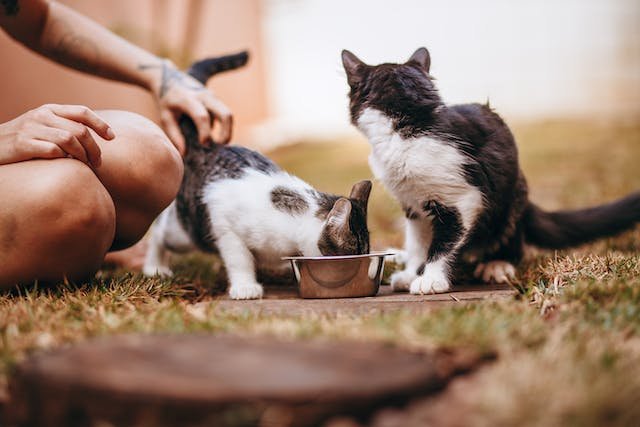
Transitioning your cat from commercial cat food to homemade food requires patience and a gradual approach. Here are some tips for a smooth transition:
- Start slow: Begin by replacing a small portion of your cat’s commercial food with homemade food. Gradually increase the proportion of homemade food over several days or weeks.
- Mix it up: Initially, mix a small amount of homemade food with your cat’s regular food. As your cat becomes accustomed to the taste and texture, gradually increase the proportion of homemade food.
- Monitor their response. Pay close attention to your cat’s response to the transition. Look for any signs of digestive upset or discomfort. If necessary, consult with your veterinarian for further guidance.
- Be patient. Some cats may take longer to adjust to the new diet. Be patient, and continue the transition at a pace that is comfortable for your cat.
Common mistakes to avoid when making homemade cat food
While preparing homemade cat food can be beneficial, it is important to avoid common mistakes that can compromise your cat’s health. Here are some mistakes to avoid:
- Imbalanced nutrition: Ensure that your cat’s homemade food provides a balanced combination of proteins, fats, carbohydrates, vitamins, and minerals. Consult with your veterinarian or a veterinary nutritionist to ensure you are meeting your cat’s specific nutritional needs.
- Inadequate preparation: Properly cook all ingredients to eliminate any potential bacteria or parasites that may be harmful to your cat. Follow the recipe instructions carefully and ensure that all ingredients are cooked to the appropriate temperatures.
- Lack of variety: Offer a variety of protein sources and ingredients in your cat’s homemade food. This helps prevent nutrient deficiencies and ensures your cat receives a well-rounded diet.
- Overfeeding: Be mindful of portion sizes to prevent overfeeding. Obesity is a common issue in cats, and homemade food is not exempt from contributing to weight gain if portion control is neglected.
Precautions and considerations for homemade cat food
While homemade cat food can be a great option for your cat’s diet, there are some precautions and considerations to keep in mind:
- Consult with your veterinarian. Before transitioning to homemade cat food, consult with your veterinarian. They can provide guidance specific to your cat’s individual needs and ensure that the homemade diet is appropriate.
- Balance and variety: Ensure that your cat’s homemade food provides a balanced combination of essential nutrients. Incorporate a variety of proteins, fats, carbohydrates, and fruits and vegetables to meet their nutritional requirements.
- Safe food handling: Practice safe food handling and storage techniques to prevent contamination and spoilage. Keep all utensils and surfaces clean, and refrigerate or freeze homemade cat food as needed.
- Regular veterinary check-ups: Schedule regular veterinary check-ups to monitor your cat’s overall health and discuss any concerns or adjustments needed in their diet.
Conclusion
In conclusion, homemade cat food offers numerous benefits for your cat’s health and well-being. By opting for homemade meals, you can have control over the quality of ingredients, tailor the diet to your cat’s specific needs, and avoid potentially harmful additives. However, it is important to understand your cat’s nutritional needs, follow appropriate recipes, and consult with your veterinarian.
Remember, providing a balanced and nutritious diet is essential for your cat’s overall health. With proper planning, preparation, and monitoring, you can provide your beloved feline friend with the best possible homemade cat food.
FAQs
Q1: Is homemade cat food cheaper?
Homemade cat food can be cheaper, depending on ingredients and sourcing.
Q2: Is homemade cat food better?
Homemade cat food can be healthy with balanced nutrients.
Q3: Is homemade cat food safe?
Ensuring proper hygiene makes homemade cat food safe.
Q3: Can you make homemade cat food?
Yes, you can make homemade cat food with a vet-approved recipe.
Q4: What kind of homemade food is good for cats?
Good homemade cat food includes lean meats, organs, and balanced supplements.
Q5: How to prepare homemade cat food?
To prepare homemade cat food, consult a vet for a balanced recipe, including lean meats, organs, and supplements, and follow proper hygiene practices during preparation.
Q6: How to make homemade cat food for kidney disease?
For homemade cat food for kidney disease, use a vet-approved recipe with reduced phosphorus and high-quality protein sources like chicken, along with added omega-3 fatty acids and controlled minerals; consult a vet for guidance.

